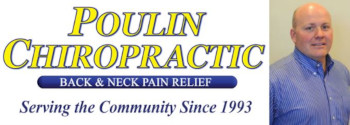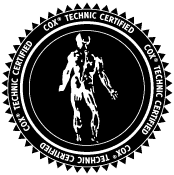Inflammation is an enemy, especially when your body is trying to heal and/or stay healthy. Your Ashburn and Herndon chiropractor is quite interested in C-reactive protein levels as they tell the story of inflammation. (Testing CRP levels is simple. Just a simple Ashburn and Herndon blood test is required since it’s made in the liver.) Elevated C-reactive protein levels indicate elevated levels of inflammation in the body. What do spinal discs do when irritated? Swell. Poulin Chiropractic of Herndon and Ashburn knows much about spinal discs, the spine, and back pain, so naturally, Poulin Chiropractic of Herndon and Ashburn is interested in c-reactive protein levels as one facet of the puzzle of back pain to be considered. Poulin Chiropractic of Herndon and Ashburn clearly sees a link between inflammation, C-reactive protein levels, health and back pain.
As a matter of fact, elevated C-reactive protein levels can be quite specific indicators for certain diseases and not just cardiovascular risk which is a topic for another article. Spine related issues like those Poulin Chiropractic of Herndon and Ashburn sees all the time and C-reactive protein levels include:
- Low bone mineral density: Significantly higher bone marrow edema (swelling) along with increased C-reactive protein levels and sacroilitis on xray are indicators for low bone mineral density (BMD). (1) C-reactive protein concentration was significantly higher in the decreased BMD group. (2)
- Bone loss in post-menopausal women: C-reactive protein levels along with age of menopause, duration of menopause, serum low density lipid, serum homocysteine, and neutrophils to lymphocyte ratio levels are risk factors for postmenopausal osteopenic women. (3)
- Inflammatory back pain: Researchers are considering how the CRP level might be a reliable indicator of inflammatory back pain. (4)
Now, inflammatory back pain is a concern your Ashburn and Herndon chiropractor works with successfully. Inflammed discs respond to chiropractic care nicely. Ashburn and Herndon chiropractic patients find relief for their back pain and neck pain when the chiropractic treatment plan involves a multi-faceted approach of chiropractic spinal manipulation with Cox Technic, nutrition and diet to reduce C-reactive protein levels, and exercise. (5) What kind of diet and nutrition changes might help? An anti-inflammatory diet is beneficial: reduce sugar/flour intake, add anti-inflammatory herbs like ginger and turmeric, increase fish intake or take fish oil supplements. (These suggestions also tend to help Ashburn and Herndon back pain patients lose weight. A welcome side-effect!)
So contact Poulin Chiropractic of Herndon and Ashburn today. Ashburn and Herndon non-surgical back pain relief and control of the C-reactive protein level you may never have even considered an issue before are waiting for you.



